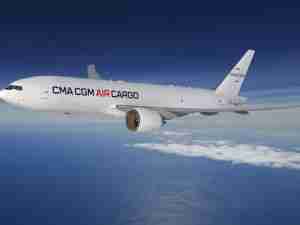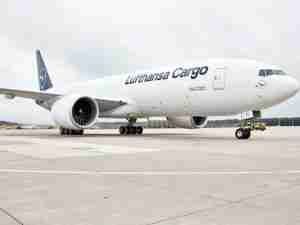U.K. Aviation Plan Puts Heathrow at Core of Post-Brexit Era
By: | Jul 21 2017 at 12:31 PM | Air Cargo
Britain’s strategy for boosting the aviation sector will seek to enhance international connectivity as the U.K. quits the European Union, tighten noise and pollution curbs, tap new anti-terrorist technologies and improve the travel experience with everything from personal baggage collection to smoother border controls.
The plan would also seek to safeguard Britain’s aerospace manufacturing base, advance the development of a homegrown space industry and encourage new developments such as drones and personal “flying taxis” while maintaining a rigorous regulatory regime, according to a call for evidence issued by the Department for Transport Friday.
At the heart of the strategy, intended to guide policy making to 2050 and beyond, is a commitment to build a 16 billion-pound ($21 billion) third runway at London Heathrow airport. The study will also consider how best to utilize spare capacity at other hubs before the new strip opens in 2030, especially as Britain seeks to safeguard and extend air links before quitting the European Union.
“In the short term, post-referendum, the government is focused on the 44 countries including EU member states, the U.S. and Canada, where our market access is via EU-negotiated agreements,” the DfT document says, adding that “new arrangements are a top priority for the government.”
Britain has the world’s biggest air transport and aerospace sector after the U.S., worth 22 billion pounds annually to the economy, while London has the busiest airport system, with flights to more than 370 cities in 100 countries.
Also under consideration is the impact of the U.K.’s air-passenger tax on competition, whether the system for allocating operating slots at busy airports might be improved, and if current rules on state aid are “correctly balanced.”
U.K. Transport Secretary Chris Grayling, who launched the public discussion at Manchester Airport in northern England, said the consultation will seek to gauge opinion on how to approach further runway developments after the decision to expand Heathrow was delayed for decades by the lack of a political consensus.
A key consideration is whether infrastructure proposals should be regarded as national decisions or local ones, especially for airports serving specific geographical regions.
“One of the areas we’d like a view on is how should we handle airport expansion in the future,” Grayling said in an interview. “There are airports around the country that have expansion plans. And the Airports Commission said that after the expansion of Heathrow they thought there was a case for a second runway to be planned and developed about a decade afterwards.”
Backing Heathrow
The minister added that the government remains firmly behind the Heathrow third runway and that the lack of a Conservative majority and the return to Parliament of prominent lawmakers opposed to the plan won’t hold it up.
The snap election put the timetable for approving the project by three or four months, he said, but the House of Commons transport committee should return to deliberations in the fall with a full vote of lawmakers set for the first half of 2018, paving the way for a national policy statement enshrining the decision.
Virgin Atlantic Airways Ltd. said that while the strategy consultation is welcome, the focus must be on the needs of the consumer and enhancing competition. What the carrier called “the world’s highest long-haul flying tax” should be reduced and new slots at Heathrow, where capacity will be expanded to 135 million passengers a year, should be allocated in a way that makes British Airways less dominant, it said in a statement.
Pinch Points
Airports and airlines should seek to alleviate so-called pinch points in the travel experience, according to the proposals. That could include luggage portering, with bags collected from the passenger, and in-town check-in, both already on offer in Asia. The Hong Kong Airport Express lets travelers drop luggage at the station two days before flying and collect it at journey’s end.
Manchester Airports Group Chief Executive Officer Charlie Cornish said in an interview that a coherent aviation policy framework has been lacking in the U.K. for 20 years or so. At the same time the new strategy needs to form part of a wider industrial approach that also delivers adequate road and rail links to airports. Faster travel times to terminals—as should be offered by the High Speed 2 rail project—would change the debate about where future runways should be built, he said.
Manchester airport has commenced a 1 billion-pound program to double the size of Terminal 2 in a push to increase annual passenger numbers from 27 million to 45 million. Cornish said MAG welcomes a suggestion in the 82-page DfT document that there could be an easing in planning caps, which limit passenger numbers regardless of runway capacity, something that could aid growth at London Stansted, which it also owns.










